67 F. high in the Twin Cities Sunday.
72 F. average high on September 15.
85 F. high on September 15, 2012.
65-70 F. dew points possible by midweek.
Jacket weather returns the end of this week.
Biblical
In
40 years tracking the vagaries & eccentricities of the weather I've
never seen the National Weather Service refer to a flood as "biblical".
That's how the Denver office described it late last week. 15 inches of
rain, falling on drought-hardened, wildfire-scarred soil, which made
run-off even worse.
It wasn't the result of stalled T-storms, but a
much-larger scale storm marooned over the Intermountain West, stuck in
place for 6 days, forcing tropical moisture up against the Front Range.
When assessing the potential for disaster don't just look at the
intensity of a storm. The forward speed is just as critical.
When weather systems stall bad things often result: more intense heat, drought or flooding.
The
1991 Halloween Superstorm that dumped over 30 inches of snow on MSP
will be forever tattooed on my psyche. That storm stalled too, and the
models didn't pick it up.
No drama for us, just a warming trend, the best chance of rain & T-storms Thursday, before we cool down again late week.
.5
- 1 inch of rain fell Saturday night, the most in 5 weeks. Long-range
models hint at a potential for more heavy rain late next week as we
transition from shirtsleeves to light jackets.
Photo credit above: "
A truck and car is washed away by a flash flood that
hit Manitou Springs, Colo., Friday sits in a drainage, covered in
rocks, Saturday, Aug. 10, 2013. Friday’s torrential rains swept mud,
boulders and other debris from the burn scar down U.S. 24, washing away
vehicles and damaging several homes and businesses in the area." (AP Photo/The Colorado Springs Gazette, Michael Ciaglo).
Colorado Flood Death Toll Rises; 500 Still Unaccounted For. Christian Post has more details on the incredible flooding underway; here's a clip: "...
In
Boulder, which bore the brunt of the disaster, the number of rescuers
was doubled to around 800 on Saturday. Airlifts will continue Sunday in
Boulder, Larimer and Weld counties, authorities said. When Gov. John
Hickenlooper toured flooded areas in a helicopter on Saturday, he had to
halt twice to rescue six stranded people and their two pets. Up to 4
inches of rain could fall by Sunday afternoon, Boulder officials said,
and advised all in affected areas to evacuate. "We're not trying to
force anyone from their home," Boulder County Sheriff Joe Pelle said.
"We're not trying to be forceful, but we're trying to be very factual
and definitive about the consequences of their decision, and we hope
that they will come down..."
Photo credit above: "Reuters/John Wark. "
An
aerial view of a farm house surrounded by flood waters along the South
Platte River near Greenley, Colorado September 14, 2013. Farming
communities along the South Platte River were ordered to evacuate ahead
of a predicted surge in the flooding which may have claimed a fifth life
and has left many still unaccounted for, according to authorities."
2013 Colorado Flood Resources Map.
The Denver Post has a terrific, interactive map that shows the scale of resources focused on helping flood survivors: "
This
map displays layers for emergency flood shelters, rain totals for
Colorado towns, and news stories by location. Use the menu in the upper
right corner to toggle layers on and off. Rain totals are from either the National Weather Service or the Community Collaborative Rain, Hail & Snow Network. If multiple measurement were reported for different areas of a city, the highest was used."
* "
Flash Flood Products: What Do They Mean?" Here's a good recap and reminder from
NOAA.
A Year's Worth Of Rain In 3-4 Days.
Check out this interactive CoCoRaHS high-resolution rainfall map
showing accumulated totals for this (historic) event, courtesy of
brendansweather.com.
 Summer 2013 Weather Extremes Tied To Extraordinarily Unusual Polar Jet Stream
Summer 2013 Weather Extremes Tied To Extraordinarily Unusual Polar Jet Stream. Here's an excerpt of a good article from Steve Tracton at
The Capital Weather Gang
that explains the "split" polar jet, a shift in the pattern that may be
at least partially responsible for some of the odd weather we've
witnessed in 2013, including the historic floods near Boulder. Here's an
excerpt: "
For at least the past one or two decades the adjective
extreme has increasingly become used in describing unusual weather. It’s
virtually impossible now to escape news of extreme drought, excessive
rainfall and floods, record breaking heat waves, cool spells and severe
weather outbreaks, etc. which seem to recur year after year around the
Northern Hemisphere. This summer was no different except that the
behavior and configuration of the polar jet stream, the river of high
altitude winds marking the divide between warm and cool air, were rare
and mind-boggling. Instead of meandering as a single stream like it
normally does, it transformed into a “dual” jet stream configuration,
sometimes transitioning from this dual setup back into a single more
coherent stream, back and forth..."

Colorado Floods Created By Hot September, Long Monsoon Season. Here's a clip from
The Denver Post: "...
Last week's rainfall is also likely to make Colorado a laboratory for climate change research.
"Scientists can use computer models to see how often similar events
occur, both with and without the presence of greenhouse gases produced
by human activity," wrote Bob Henson, a science writer at the University
Corporation for Atmospheric Research in Boulder. "It's then possible to
estimate how much the odds of such an event have been boosted by fossil
fuel use."
In 24 hours, Boulder was deluged with half the precipitation it sees in
an average year. From Monday to Friday, more rain fell on the city than
the entire year before the storm."
Photo credit above: "
In
this image made with a slow shutter speed which blurred the rushing
water, flood waters course through a small park in Boulder, Colo.,
Thursday morning, Sept. 12, 2013. Heavy rains and scarring from recent
wildfires sent walls of water crashing down mountainsides in the area." (AP Photo/Jud Valeski).
Saturday Night Rainfall Amounts.
Much of the metro picked up .5" to .8" of rain Saturday night, the most
since nearly 2" of rain soaked the metro on August 5-6. Over 1" fell at
St. Cloud and the far northern suburbs. Map: MesoWest.
Closer To Average.
Temperatures recover a bit by midweek as a south flow pulls 60-degree
dew point air into Minnesota; a muggy taste of summer by midweek. The
best chance of (some) rain comes Thursday, followed by another surge of
cooler air by late week. Source: weatherspark.com.
An Unusually Sticky End of Summer. Here's a clip from Dr. Mark Seeley's weekly
WeatherTalk segment, focused on the number of 70-degree dew point days at the end of summer: "...
So
far, and this is likely to be close to the final number, MSP has
reported 246 hours in 2013 with a dewpoint of 70 degrees F or higher.
This is well above the historical average and over the past 68 years
(since 1945) ranks as the 15th highest annual value (the highest being
512 hours in 2002). What is unusual about this year is that the majority
of hours with such high dewpoints (including a record setting value of
77 degrees F on August 27th) occurred later in the year (late August and
early September), and not in late June to early August as normally
happens..."
The Power of Lightning. Thanks to the Florida Keys Sheriff and
Twitter for sharing the aftermath of a cloud to ground strike over the Keys. Ouch.
TODAY: Sunny, comfortably cool. Winds: SE 5-10. High: 67
MONDAY NIGHT: Mostly clear, still chilly. Low: 49
TUESDAY: Clouds increase - sun fades. High: 70
WEDNESDAY: Mix of clouds and sun, milder. Sticky again. Dew point: 66. Wake-up: 60. High: 74
THURSDAY: Best chance of showers, T-storms. Wake-up: 63. High: 77
FRIDAY: Cool breeze. AM sun, PM clouds. Wake-up: 58. High: 64
SATURDAY: Partly sunny. September breeze. Wake-up: 47. High: 61
SUNDAY: Dim sun, turning warmer. Lake-worthy? Wake-up: 53. High: 68
Climate Stories...
Colorado's "Biblical" Flood In Line With Climate Trends. No,
it's not your imagination - we are seeing more extreme rainfall
amounts; 4 1-in-1,000 year floods in Minnesota since 2004, according to
the MN Climate Office, including last year's historic flood in Duluth.
Here's an excerpt from meteorologist Andrew Freedman and
Climate Central: "...
Extreme
rainfall events have become more frequent across the U.S. during the
past several decades in part due to manmade global warming. Increasing
air and ocean temperatures mean that the air is generally carrying more water vapor than it used to,
and this moisture can be tapped by storm systems to yield rain or snow
extremes. Trends in extreme precipitation events vary by region, though,
and in general the biggest increases have taken place in the Midwest
and Northeast. However, most parts of the U.S. have seen an increase in
extreme precipitation events, according to the draft National Climate Assessment report
that was released this past January. The report goes on to note that in
the future, "increases in the frequency and intensity of extreme
precipitation events are projected for most U.S. areas...”
Image credit above: "
Water vapor satellite loop from Sept. 12, 2013 showing the plume of moisture directed at Colorado." Credit: CIMSS.

Amid Drought, Explaining Colorado's Extreme Floods.
Yes, climate change was probably a large contributing factor,
superimposed on otherwise random storm cycles. Here's an excerpt from
National Geographic: "....
Sandra Postel, National Geographic’s Freshwater Fellow, said that the long-term drought that has parched the area and gripped much of the Colorado River Basin over the past 14 years
may be partly to blame for the severity of the floods. Drought tends to
harden the soil, she said. When rains do come, less of the water can
absorb into the ground, so it quickly runs off the land. Similarly,
fires can lead to worse flooding, because they remove vegetation that
can slow down and trap rainfall, Postel said. (See “Fire and Rain: The One-Two Punch of Flooding After Blazes.”) In 2012, the Boulder area was afflicted by the Flagstaff Fire.
In 2010, the Fourmile Canyon fire caused damage to Boulder County worth
$217 million. Scientists have warned that increasing frequency and
severity of wildfires and droughts may be symptoms of climate change, as
much of the planet warms. That, in turn, can lead to more floods..."
Photo credit above: "A
home and car are stranded after a flash flood in Coal Creek destroyed
the bridge near Golden, Colorado, September 12, 2013. Scientists say
drought, fires, and global warming may have helped spur the flood." Photograph by Rick Wilking, Reuters
Calling Out The Climate Conspirators. Here's an excerpt of a story at
Columbia Journalism Review
that shows how quickly erroneous information and stories can percolate
up through the denial-sphere, in this case the U.K. Daily Mail: "...
But
the problem with the Internet is that it often doesn’t weigh the
reliability of sources before spreading their ideas around the masses.
Both MSN and the Telegraph regurgitated Rose’s cooling mantra, which then briefly trended on Twitter.
Which means that, regardless of the outrageous nature of Rose’s claims,
science writers (that is, writers whose work is based in actual
science) spent the early part of their week dismantling his piece.
First, in The Guardian
Dana Nuccitelli issued a dense, point-by-point rebuttal of Rose’s
arguments, beginning with his suggestion that this year’s increase in
sea ice could be used as evidence of a warming reversal. Sea ice levels
are 60-percent higher this year than last—though the measurement should
hold until the end of the September melting period—but as Nuccitelli
points out, the rate of ice retreat is only significant when
contextualized by last year’s dramatic depletion rate.."
Court Rulings Accept Climate Science. The full PDF article from the New York Law Review is
here.
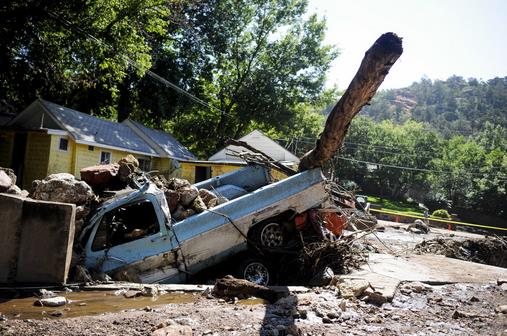
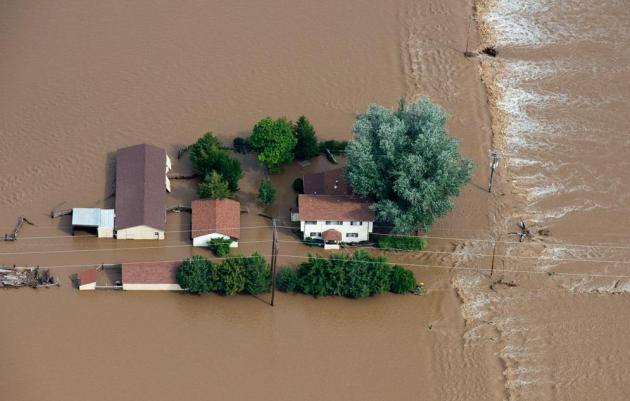
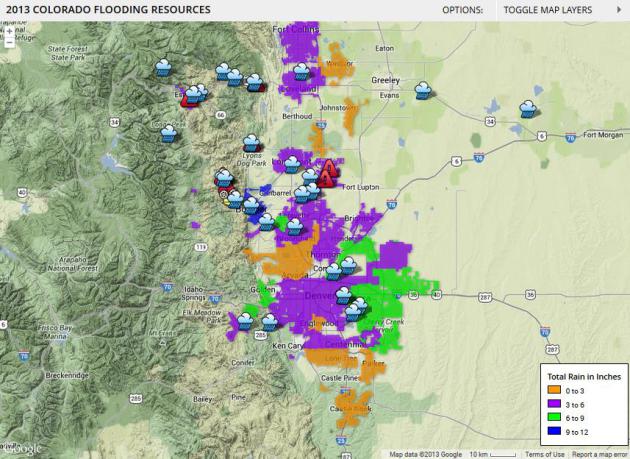
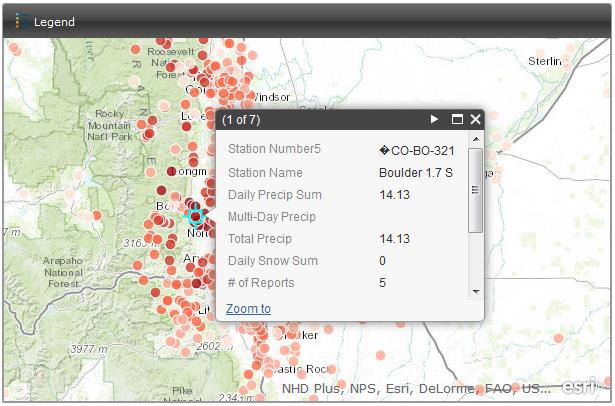
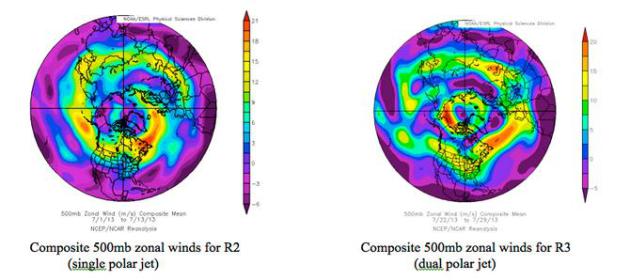 Summer 2013 Weather Extremes Tied To Extraordinarily Unusual Polar Jet Stream. Here's an excerpt of a good article from Steve Tracton at The Capital Weather Gang
that explains the "split" polar jet, a shift in the pattern that may be
at least partially responsible for some of the odd weather we've
witnessed in 2013, including the historic floods near Boulder. Here's an
excerpt: "For at least the past one or two decades the adjective
extreme has increasingly become used in describing unusual weather. It’s
virtually impossible now to escape news of extreme drought, excessive
rainfall and floods, record breaking heat waves, cool spells and severe
weather outbreaks, etc. which seem to recur year after year around the
Northern Hemisphere. This summer was no different except that the
behavior and configuration of the polar jet stream, the river of high
altitude winds marking the divide between warm and cool air, were rare
and mind-boggling. Instead of meandering as a single stream like it
normally does, it transformed into a “dual” jet stream configuration,
sometimes transitioning from this dual setup back into a single more
coherent stream, back and forth..."
Summer 2013 Weather Extremes Tied To Extraordinarily Unusual Polar Jet Stream. Here's an excerpt of a good article from Steve Tracton at The Capital Weather Gang
that explains the "split" polar jet, a shift in the pattern that may be
at least partially responsible for some of the odd weather we've
witnessed in 2013, including the historic floods near Boulder. Here's an
excerpt: "For at least the past one or two decades the adjective
extreme has increasingly become used in describing unusual weather. It’s
virtually impossible now to escape news of extreme drought, excessive
rainfall and floods, record breaking heat waves, cool spells and severe
weather outbreaks, etc. which seem to recur year after year around the
Northern Hemisphere. This summer was no different except that the
behavior and configuration of the polar jet stream, the river of high
altitude winds marking the divide between warm and cool air, were rare
and mind-boggling. Instead of meandering as a single stream like it
normally does, it transformed into a “dual” jet stream configuration,
sometimes transitioning from this dual setup back into a single more
coherent stream, back and forth..."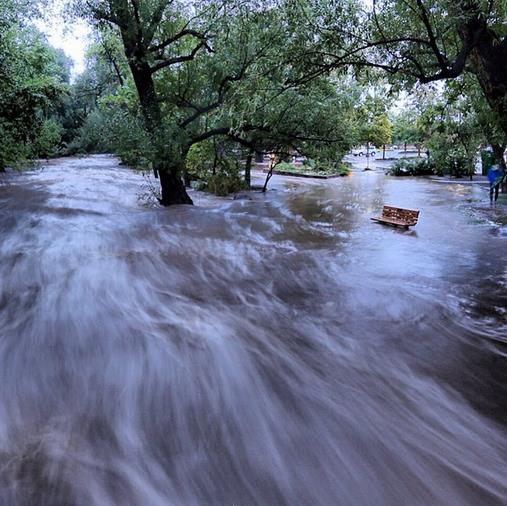
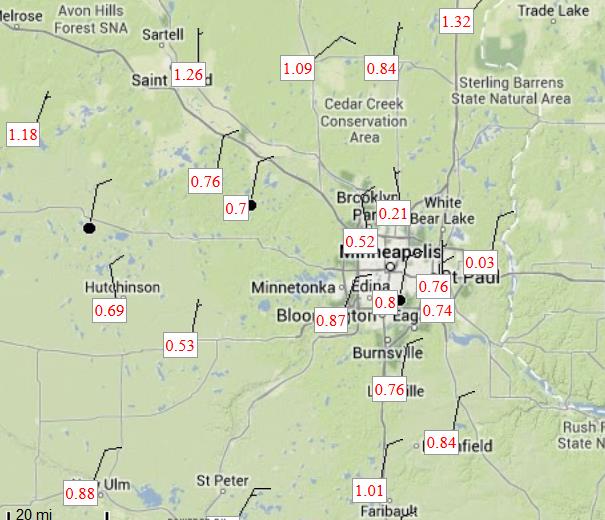
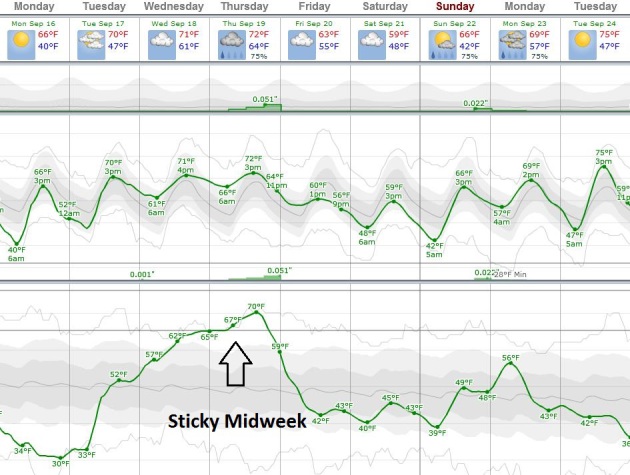
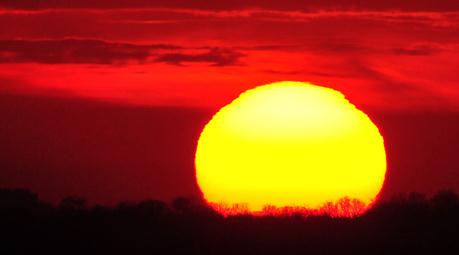
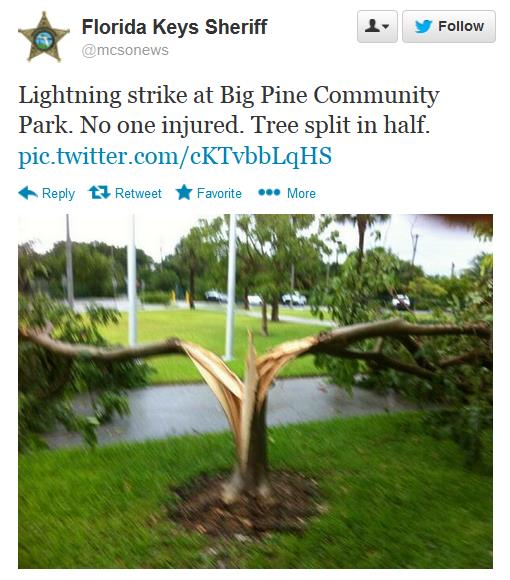
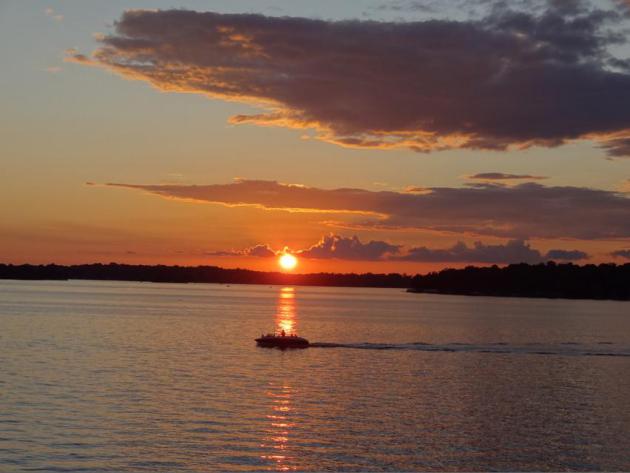
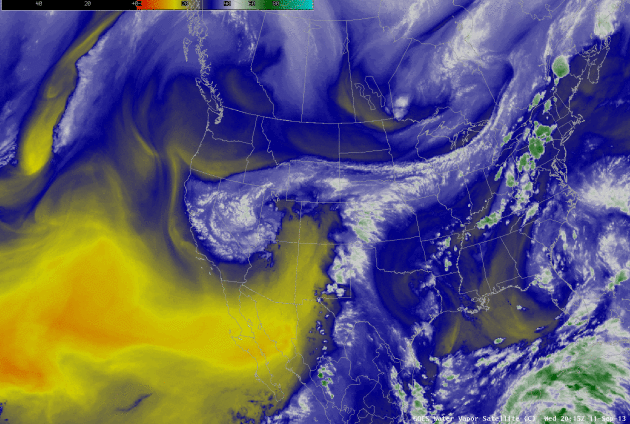
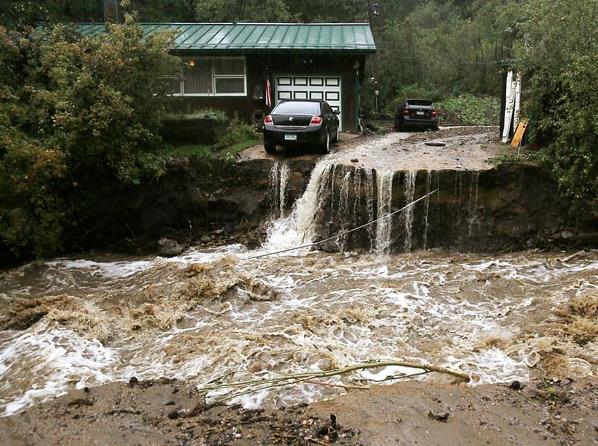

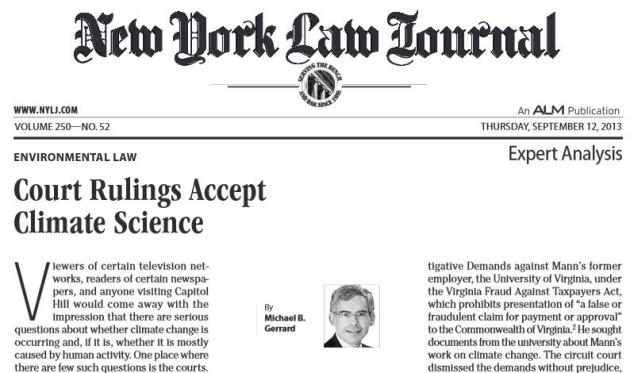
No comments:
Post a Comment